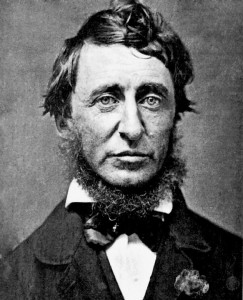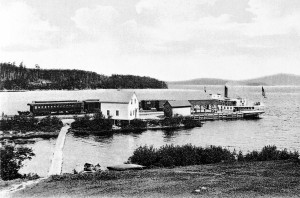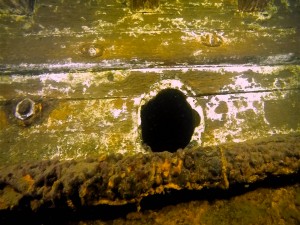“At eight o’clock the steamer, with her bell and whistle, scaring the moose, summoned us on board. She was a well-appointed little boat, commanded by a gentlemanly captain, with patent life-seats and metallic life-boat, and dinner on board, if you wish.”

Henry David Thoreau
September 15, 1853
The Maine Woods
Chesuncook Part 1
Timeline…
- 1835 First steamboat on Moosehead
- 1836 Greenville incorporated
- 1844/45 Mount Kineo ‘tavern’ built
- 1847 First Prohibition Law is passed in Maine
- 1848 First Mount Kineo House built
- 1853 Thoreau visits Moosehead
- 1865 American Civil War ends
- 1868 First Mount Kineo House burned
- 1871 Second Mount Kineo House opened
- 1882 Second Mount Kineo expanded (burned Oct of same year)
- 1884 Third Mount Kineo House opened
- 1884 First railroad reaches G’ville Junction
- 1906 Kineo Short Line Railroad
- 1908 Henry Ford debut of Model T
- 1911 New Mount Kineo House expansion
- 1914 World War I Begins
- 1918 Coburn Steamboat Company operates at loss of $13,000
- 1920 Prohibition begins
- 1929 The Great Depression begins
- 1933 Kineo Branch Railroad eliminated
- 1933 Prohibition ends
- 1938 Mount Kineo House destroyed
- 1939 World War II begins
- 1945 World War II ends
- 1950 Mount Kineo House reopened
- 1970 Mount Kineo House closed
- 1975 Katahdin hauled last log boom
- 1979 Katahdin added to National Register


Moosehead Lake Steamboat History
The start…

Preceding the Civil War, steamboat history began on Moosehead Lake in 1835. Steamboats were the only means of major transportation to the numerous small hunting camps, farms, and villages before the railroad came to the area. It is during this era Henry David Thoreau wrote about his trip up the lake by steamship mid-September 1853. As the area became a destination for fisherman, hunters, and loggers, the Kineo House flourished, and just after 1900 over 25 boats once steamed up the lake carrying passengers, livestock, mail, supplies and equipment. Moosehead was booming and so was the Coburn Steamboat Company, which owned the vast majority of large vessels.
The decline…
The end of Great Depression also marked the end of the golden-era of Moosehead Lake steamships. In the late 1930’s, with the popularity of the automobile and development of roads around Moosehead, the use of steamships for passengers and freight declined. In 1933, the railroad eliminated the Kineo Branch. Later in 1938, the Kineo House was sold and later burned during demolition. By now, the Katahdin, and her sister ship, the Twilight were both used almost exclusively for logging as a towboats to haul booms or rafts of logs as big as 20-30 acres. In February 26, 1941, the Twilight sank while overwintering, leaving the Katahdin as the last of the great steamships. Between the 1940s and 70s, the vast majority of vessels were scuttled or abandoned.
What happened…
There is little documented about the fate of the other steamboats in the fleet. During the steamboat era on Moosehead, over 50 vessels cruised the waters. According to an account by J.S. Powers in the May 2009 issue of Maine Coastal News, Major Benjamin Bigney reported that many of the early boats, including the Moosehead I, the Governor Coburn and the William Parker were “broken up,” scuttled, or sunk. We know the Katahdin I caught fire while underway and was run aground near Sandbar Island. Anecdotal reports indicate many of the steamboats were burned to the waterline and sunk once it was deemed the vessels reached the end of their useful lives, as was the fate of the Kineo.
Today…
In 1975, under the ownership of Scott Paper Company, the “Kate” participated in the nation’s last log drive and was then gifted to the Moosehead Marine Museum and designated a National Historic Landmark. Even after many years of neglect, in the 1980s the Katahdin once again made wake in the lake. Constant restoration and preservation efforts have made it possible for the Katahdin to ply the waters of Moosehead today. Only now she hauls tourists, sight-seers, and private parties up the lake instead of turn-of-the-century moguls, freight, and log booms – taking her place with the Moosehead Marine Museum as a living exhibit.
Underwater…

Divers have been visiting Moosehead Lake since the 1960’s. In 1977 about 30 divers visited the lake as part a weekend hosted by the Auburn Lewiston Maine Marine Explorers. In 1992, a group of divers did an ice dive and began to document the wrecks in the area of Steamboat Point. Later in the 1990’s commercial divers visited the lake to reclaim sunken logs lost over decades of log boom tows down the lake. In 2015 Moosehead Lake Divers formed as a recreational diving group with the goal of discovering new dive spots and wrecks and to help establish dive tourism in the area. Moosehead Lake Divers hopes to document and help preserve the underwater history of Moosehead Lake by documenting and sharing their findings with the general public.